October 23
After breakfast, we set out for a village some 40 kilometers away, called Boda Podder. We pass men working in the fields with water buffaloes.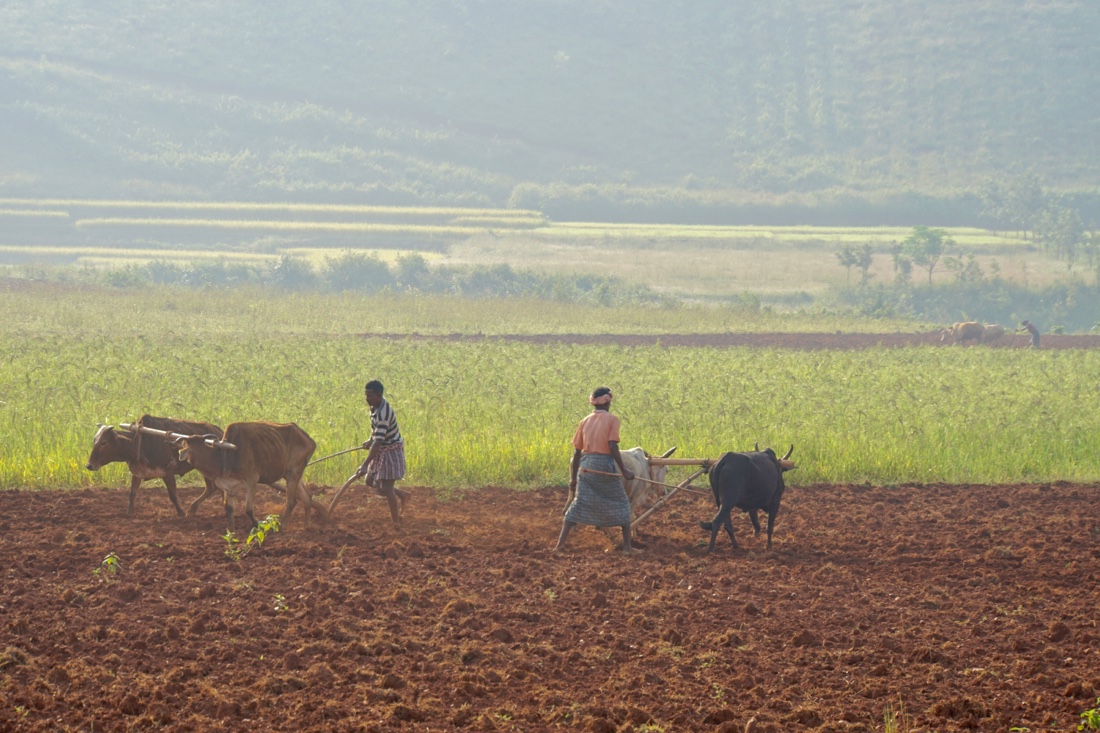
As we pass through villages we see daily life, women gathering water, a man squatting, brushing his teeth by the road, a group of men dressed in Western garb, with women in saris, nearby. We stop briefly for Prasant (I’ve been misspelling it as Prashant, which is how my Delhi travel agent spells his name) and our driver, Dilip, to have tea
We are in a pretty area, with hills all around, where all the hill tribes live.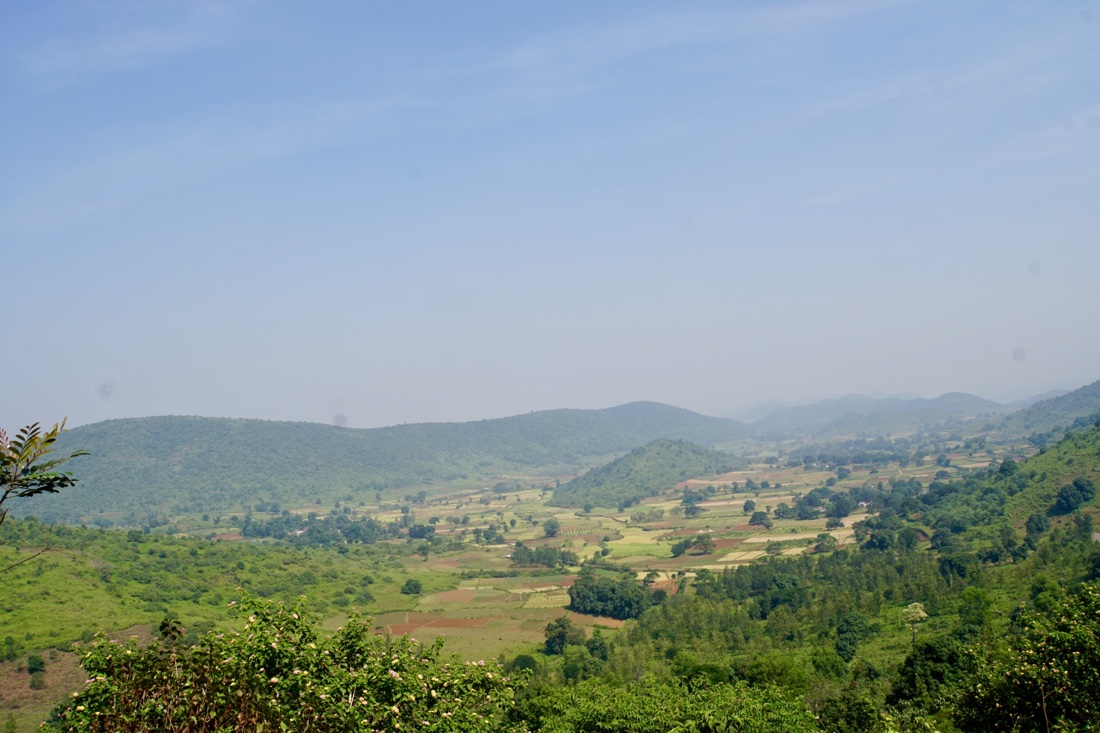
Most of the tribes have no roads, but the ones we’ll visit have had roads built by the government, who also has built schools, given people money to help them build houses, provided toilets and, in general, done much more for the tribal people than I would have imagined. The land is fertile, supporting ginger, potatoes, beans, cabbage, bananas, cauliflower and many other vegetables.
The Paika, a warrior tribe historically, who protected the king, and now works in agriculture lives in Boda Podder. The other village we visit, Mali Guda, is inhabited by the Mali tribe, who Prasant says are similar to Hindus. They don’t drink, and are good at growing organic vegetables, which they sell in the markets.
I walk leisurely with Prasant through these villages, sometimes pausing to sit down, and observe their lifestyles.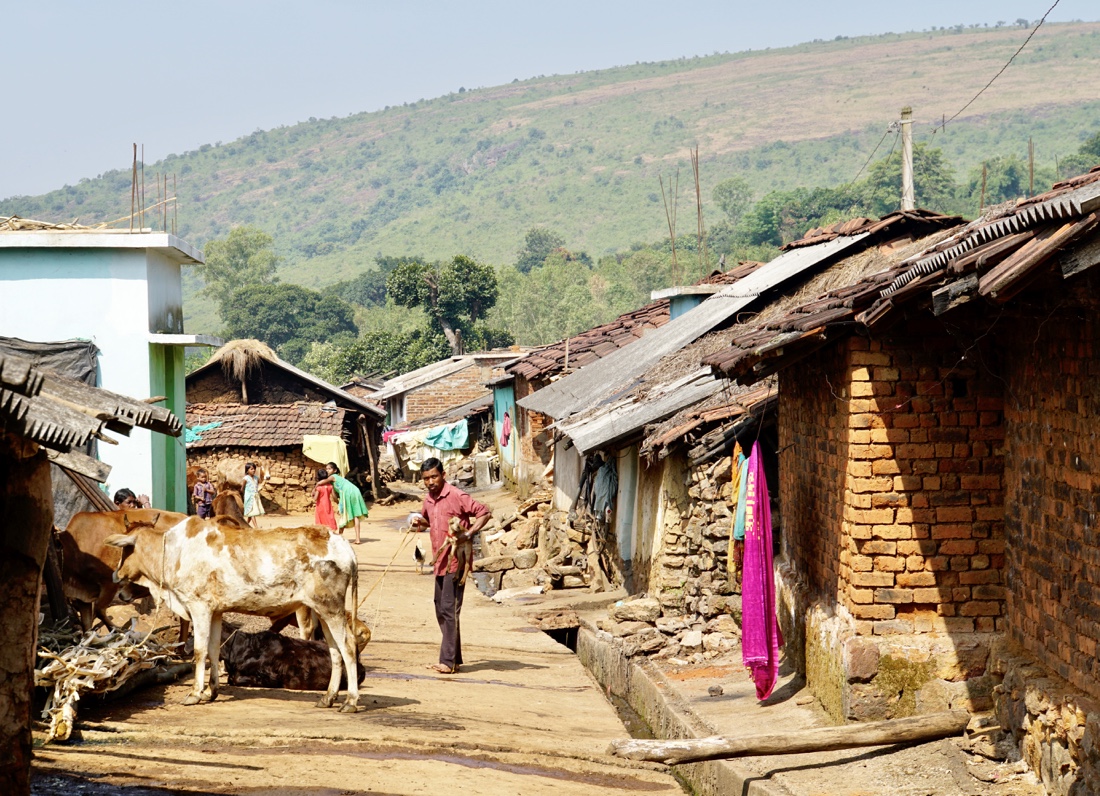
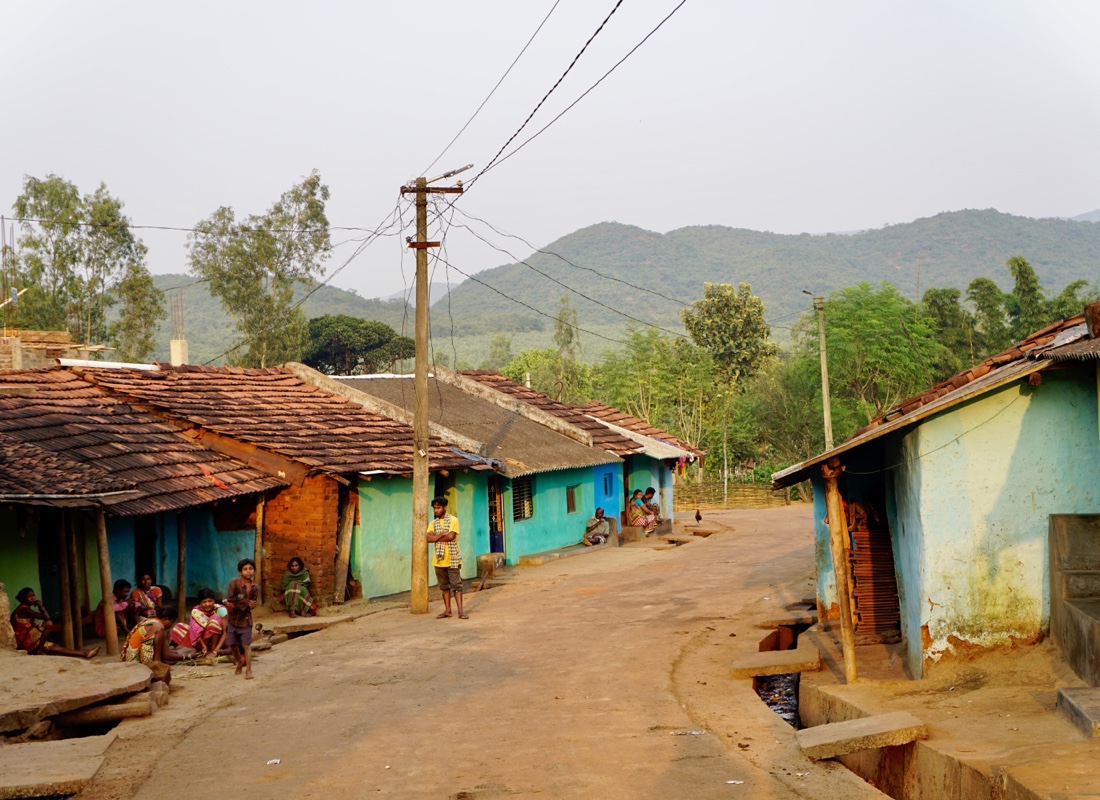
People are very friendly and we exchange greetings of “juhar ” with them, which is their version of “namaste.” Prasant is very good at pointing out details that I would otherwise miss. He’s very knowledgeable about the tribes, their lives and the agriculture surrounding the villages.
At various points, we see women carrying logs, repairing houses with mud and sweeping off the doorstep. We also see a group of men heading out to the field.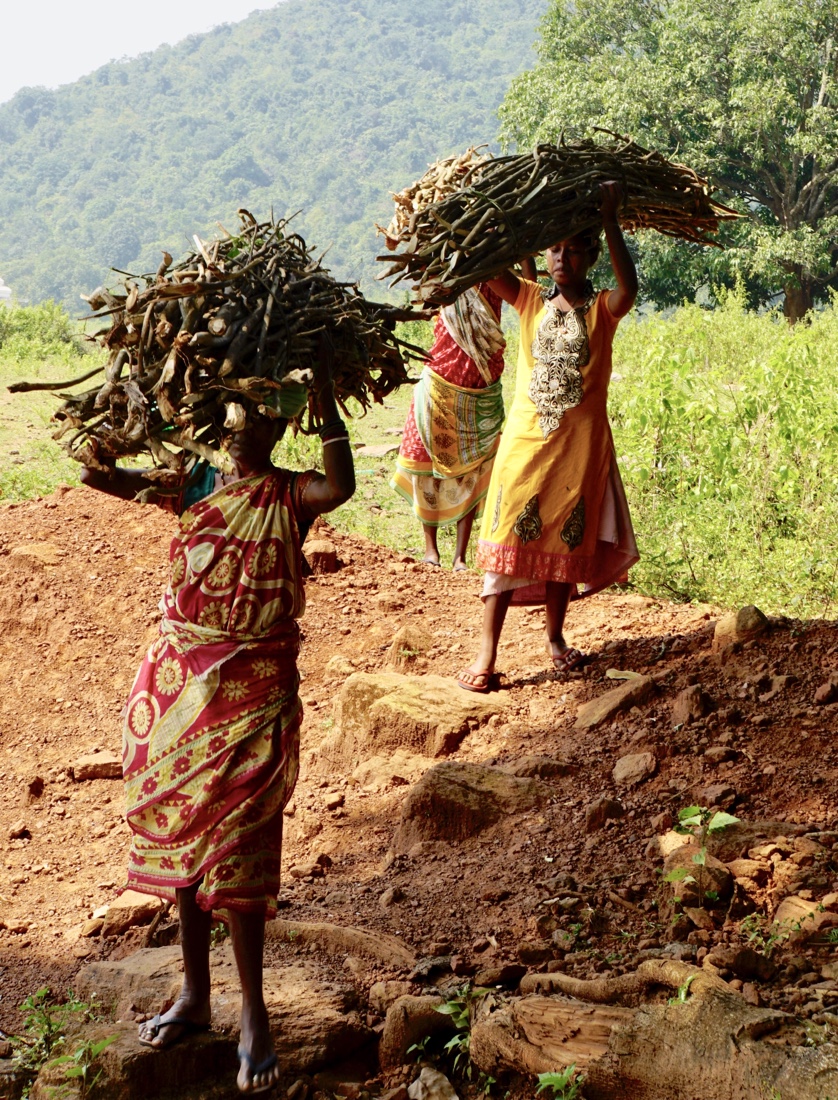



There’s a modern-day businessman selling children’s clothes from a rack on his motorcycle, and a small shopkeeper.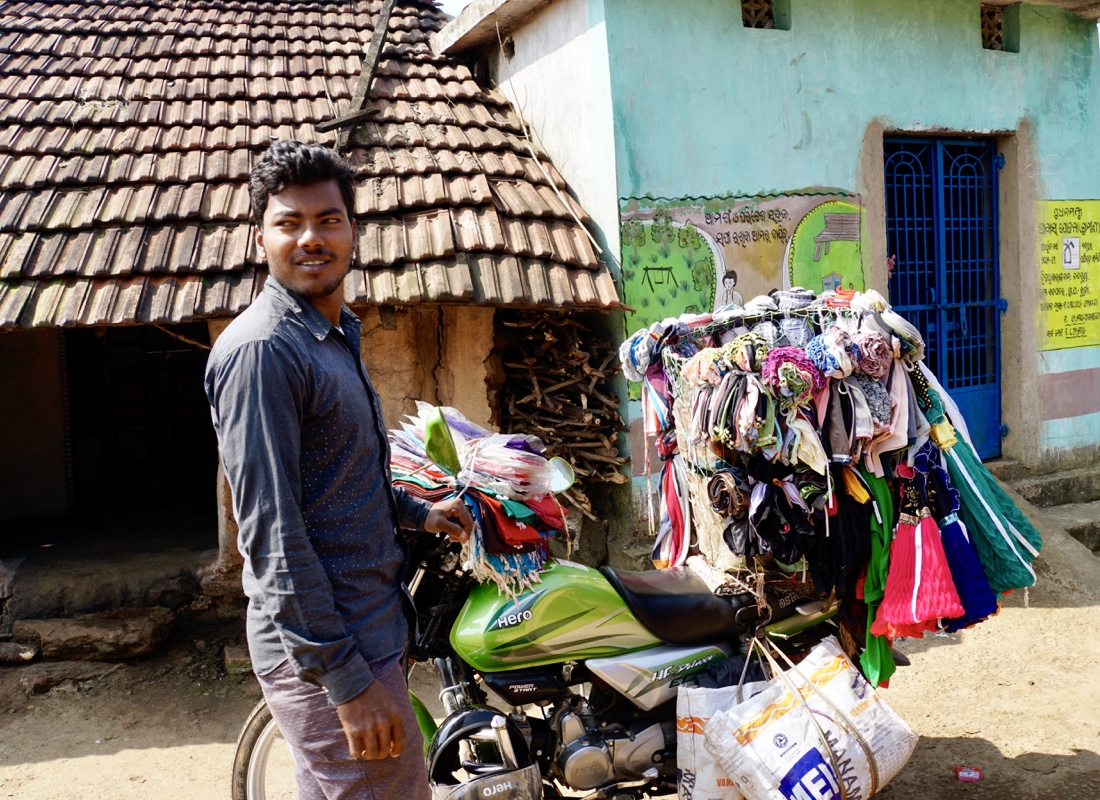
 And the head of the second village poses with the goddess.
And the head of the second village poses with the goddess.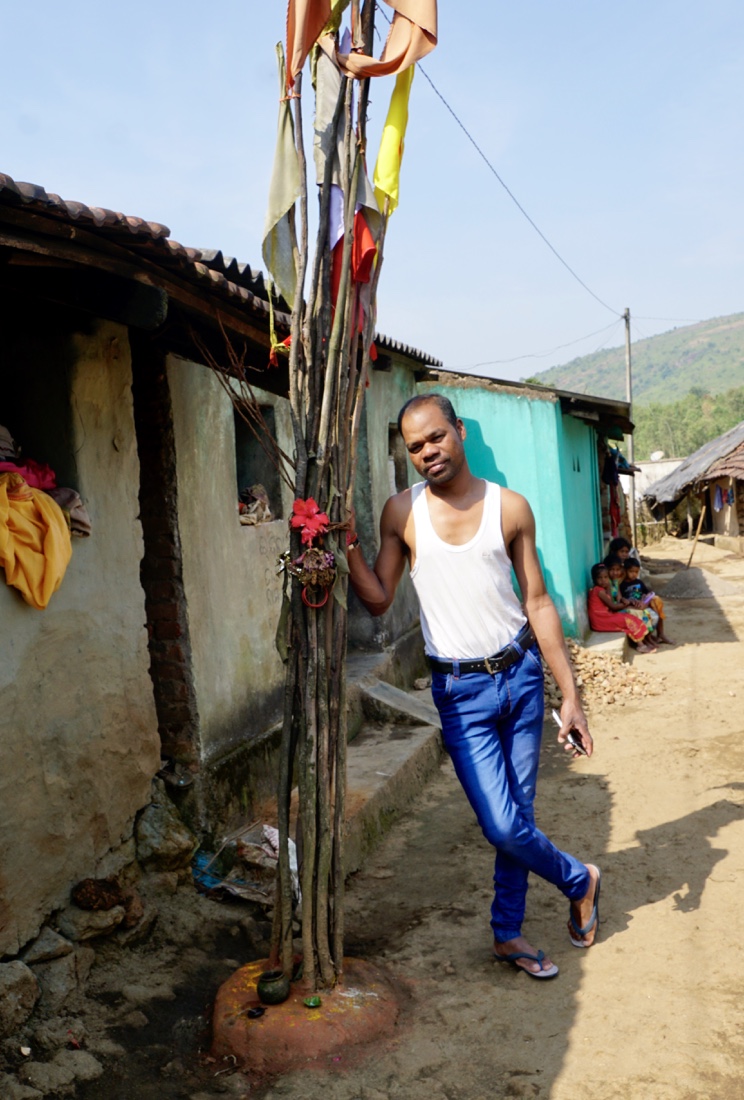
What I most enjoy, though, is photographing the people, so I’m including a healthy dose of those. Most are willing to be photographed, though some need to be coaxed. Often, they’ll stand ramrod straight, hands at their sides, and need to be encouraged to relax a bit. Sometimes the best approach is to take a stiff photo and show it to your subject, often eliciting smiles and laughs, which lead to better photos.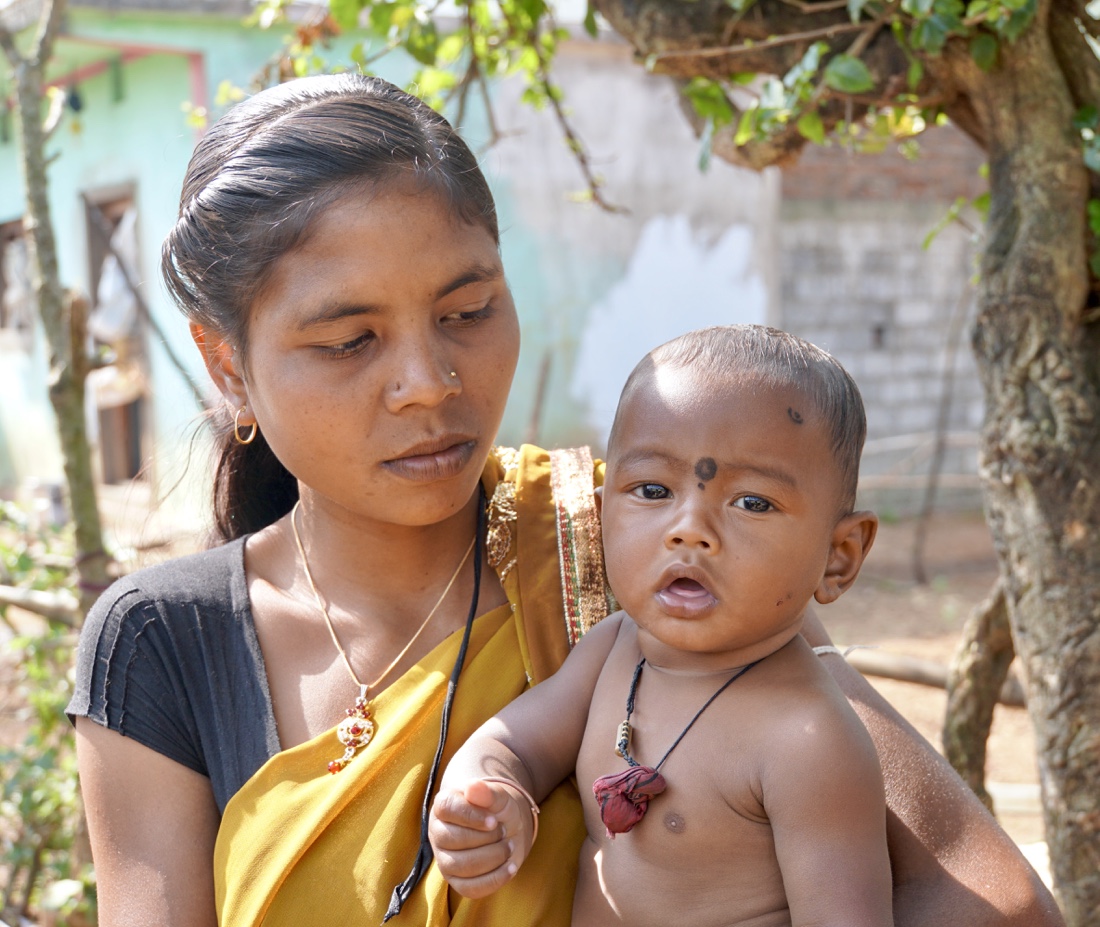


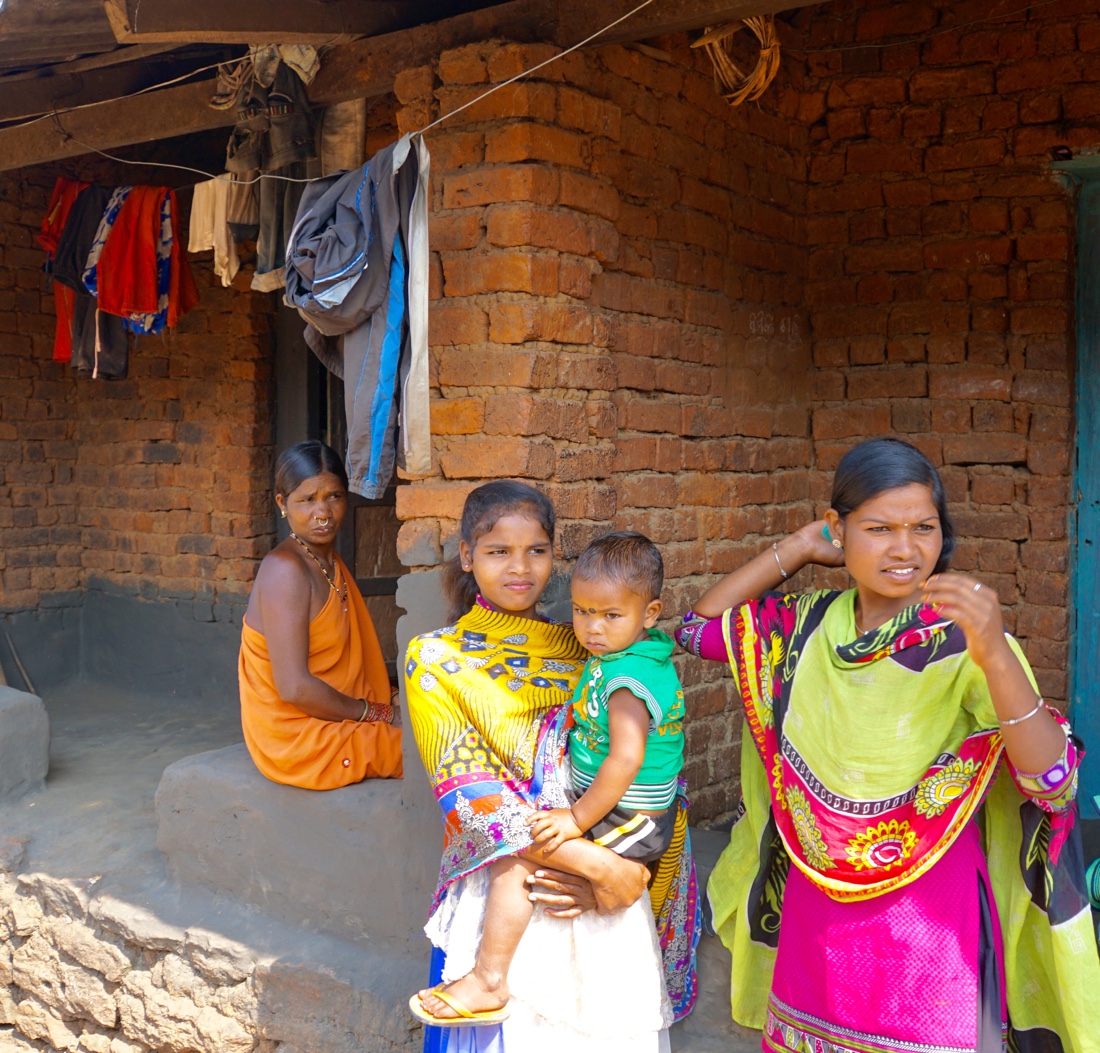


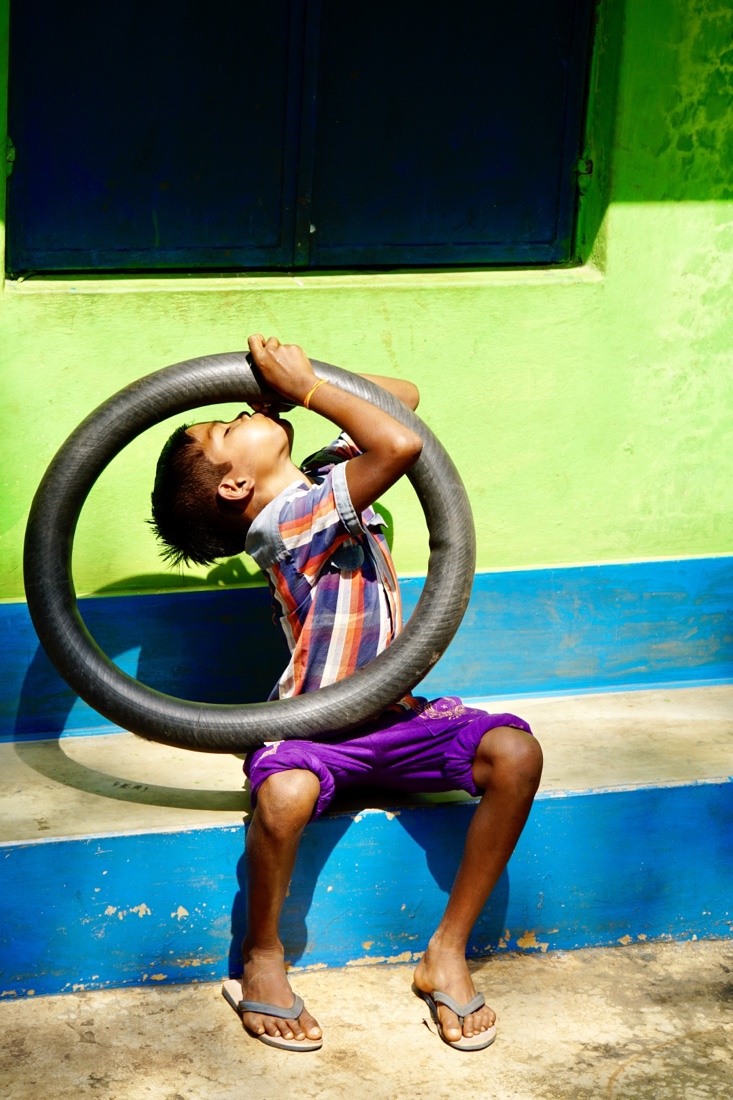
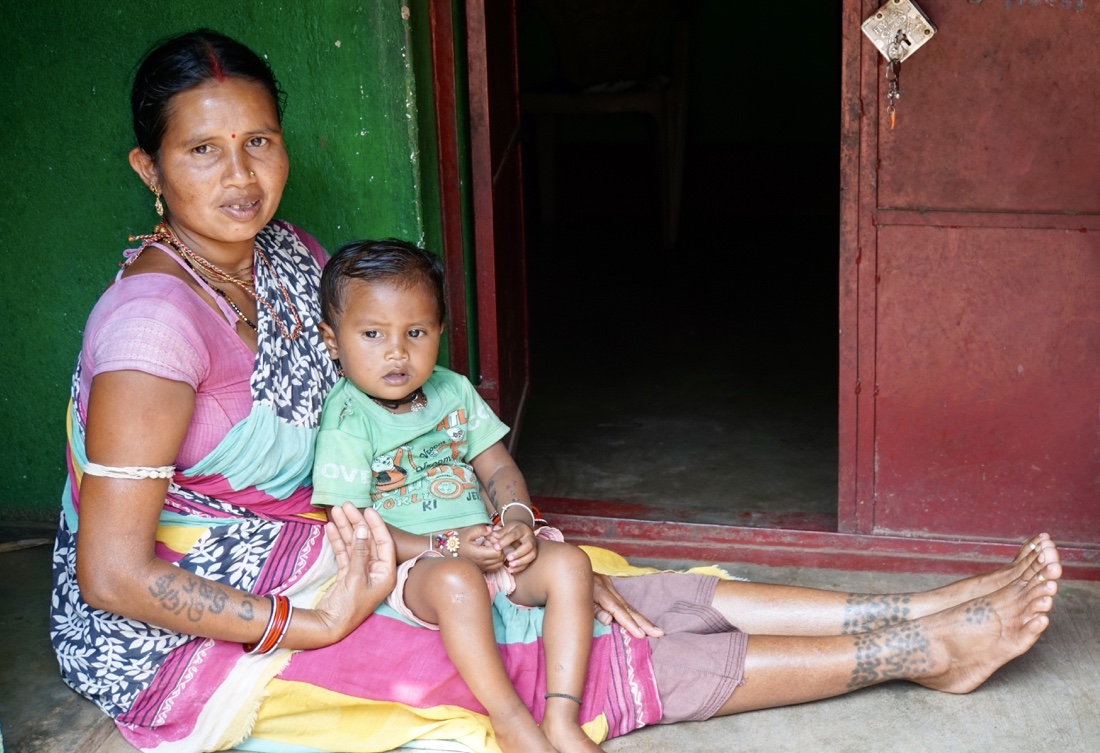
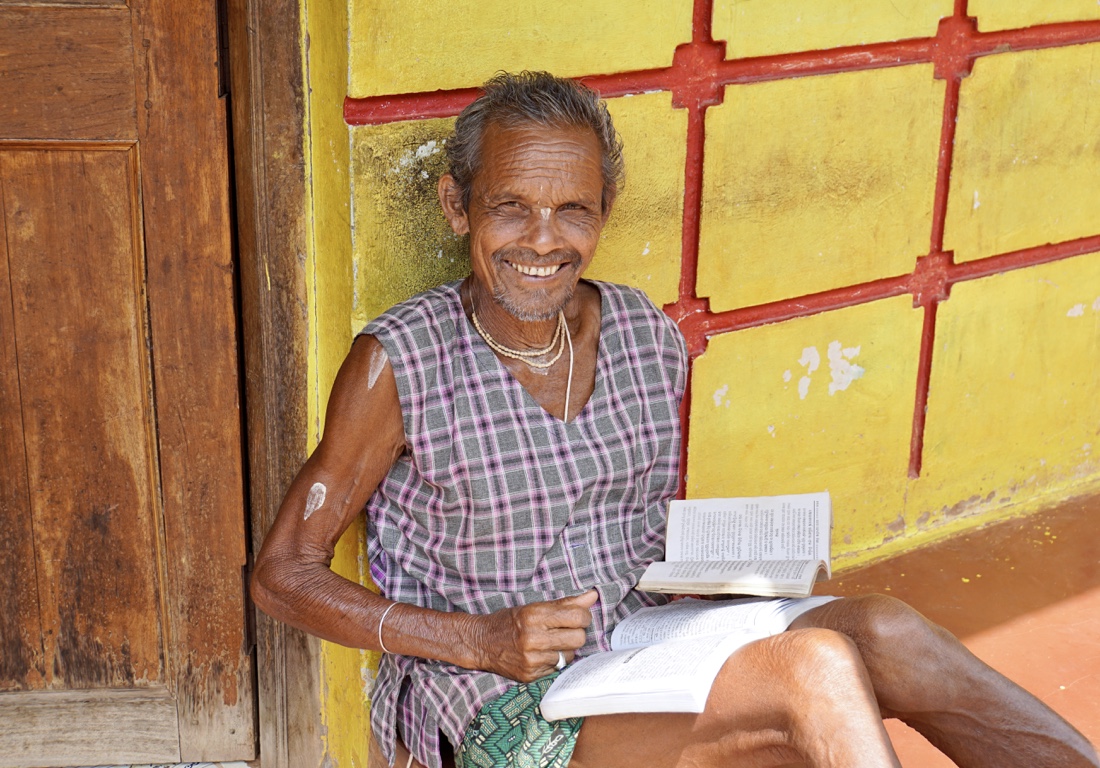
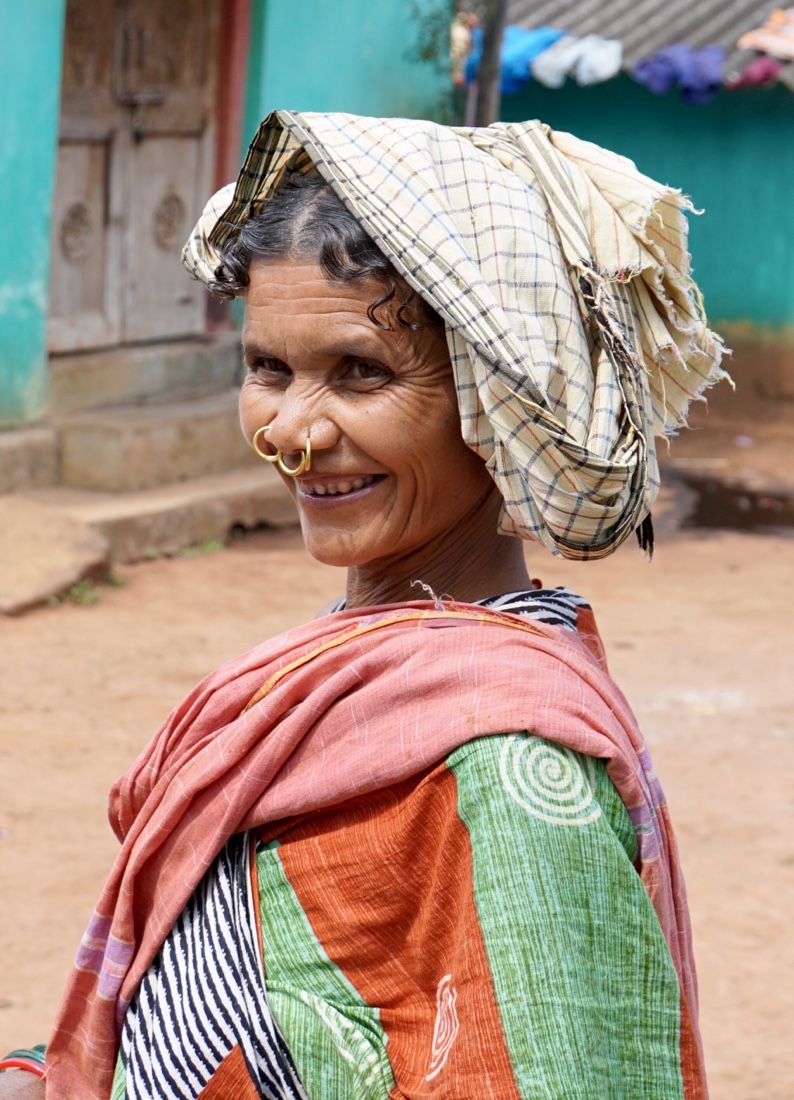
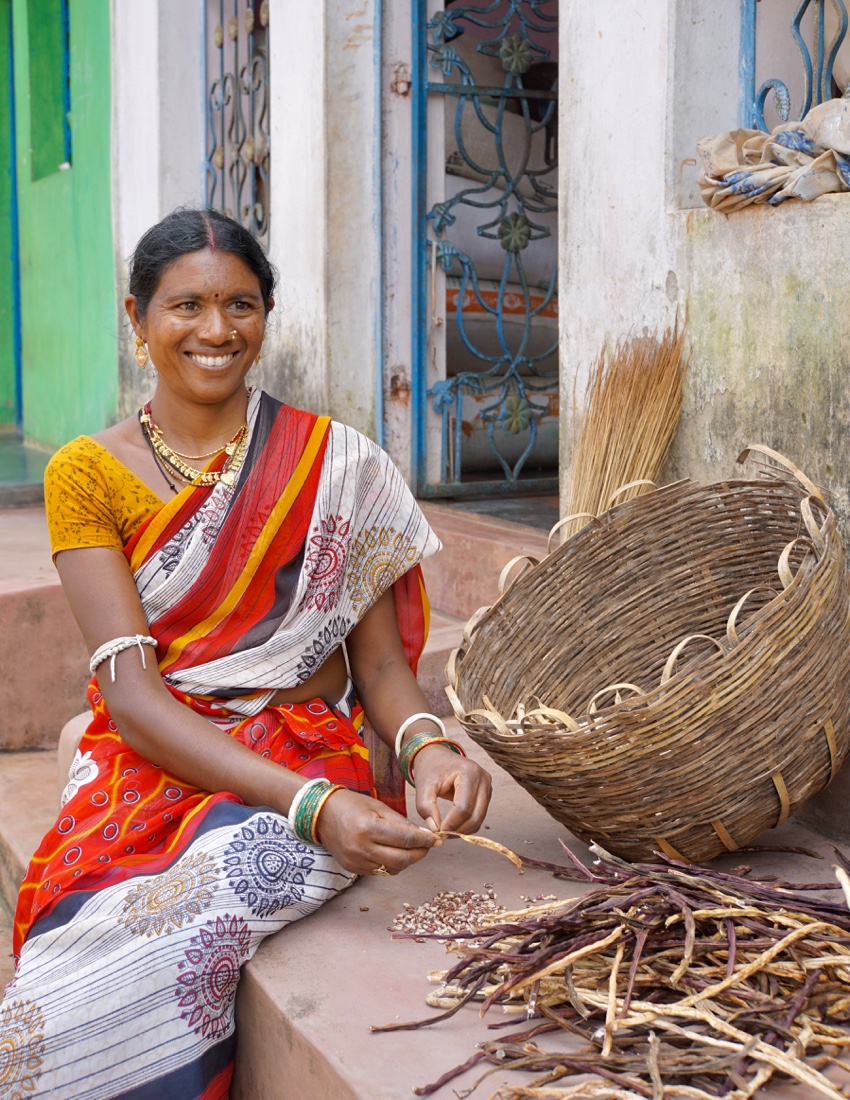

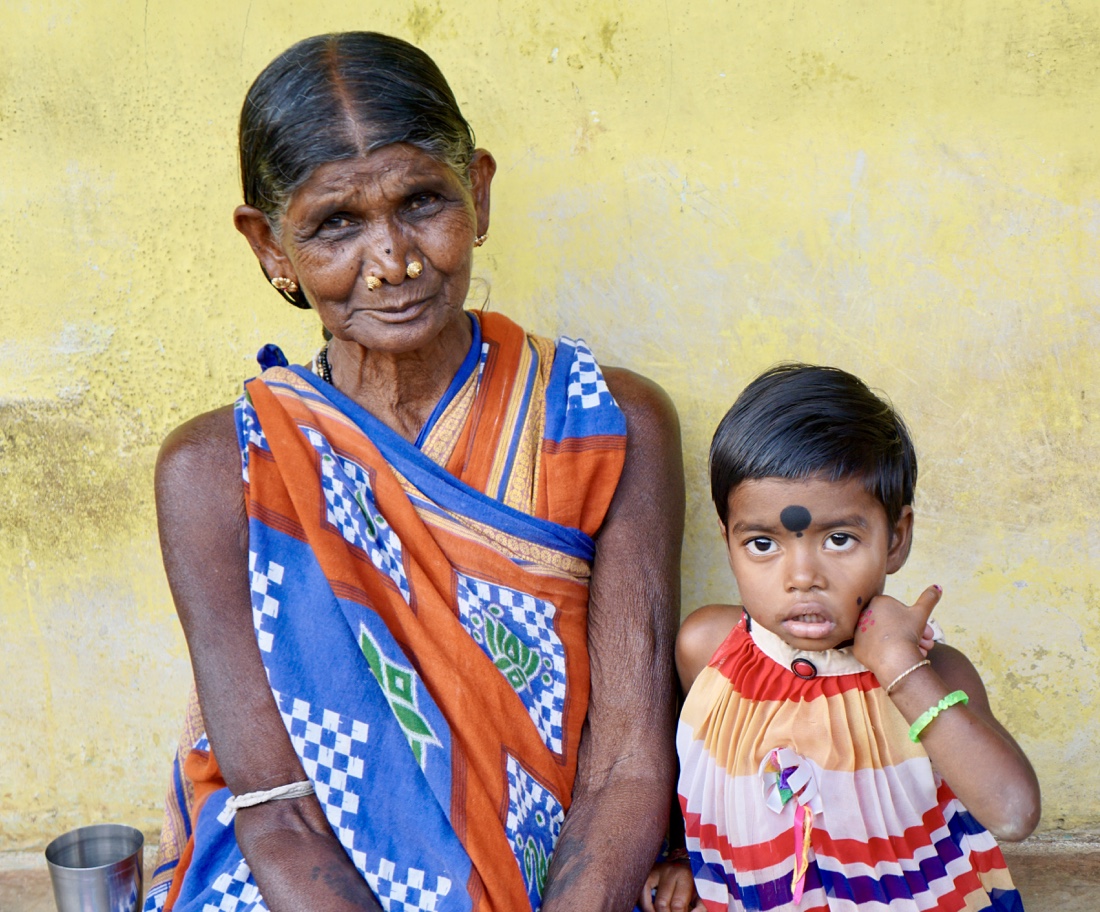
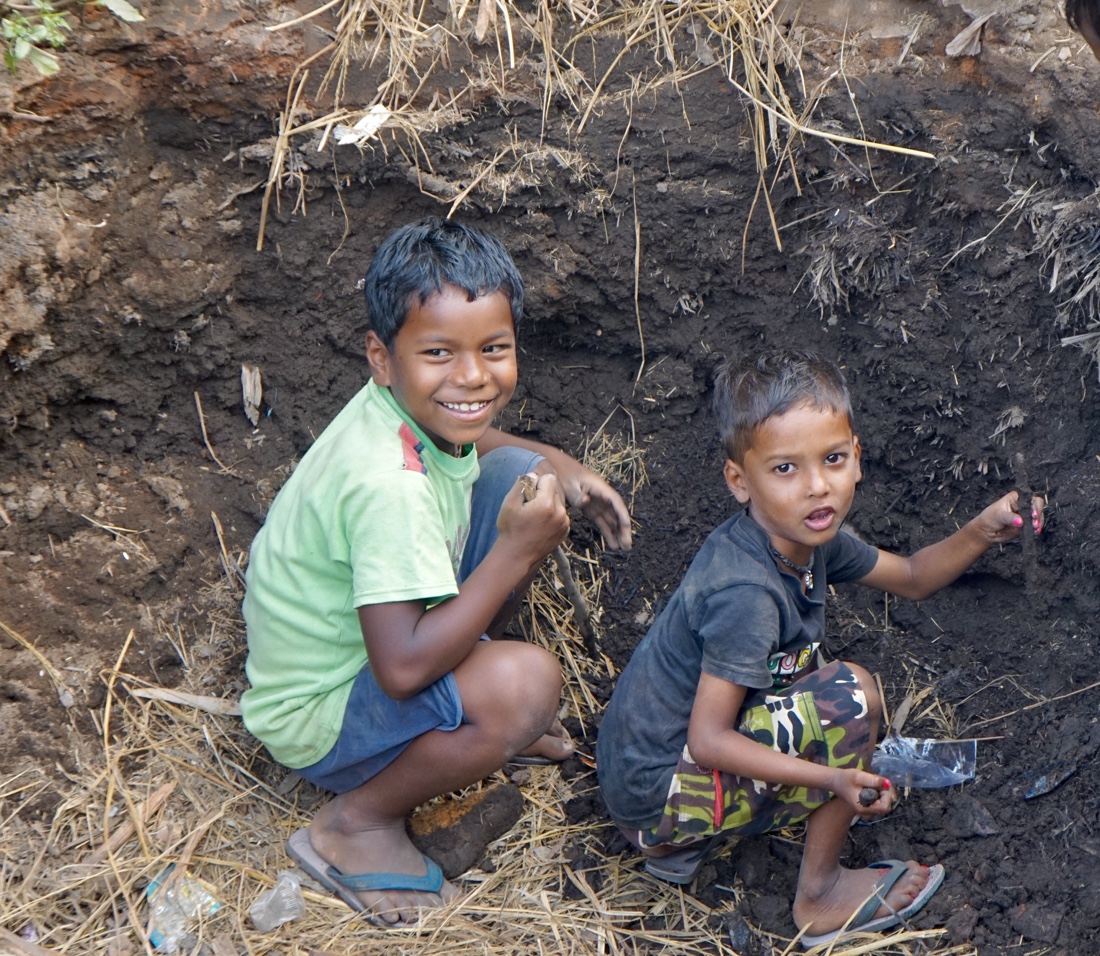
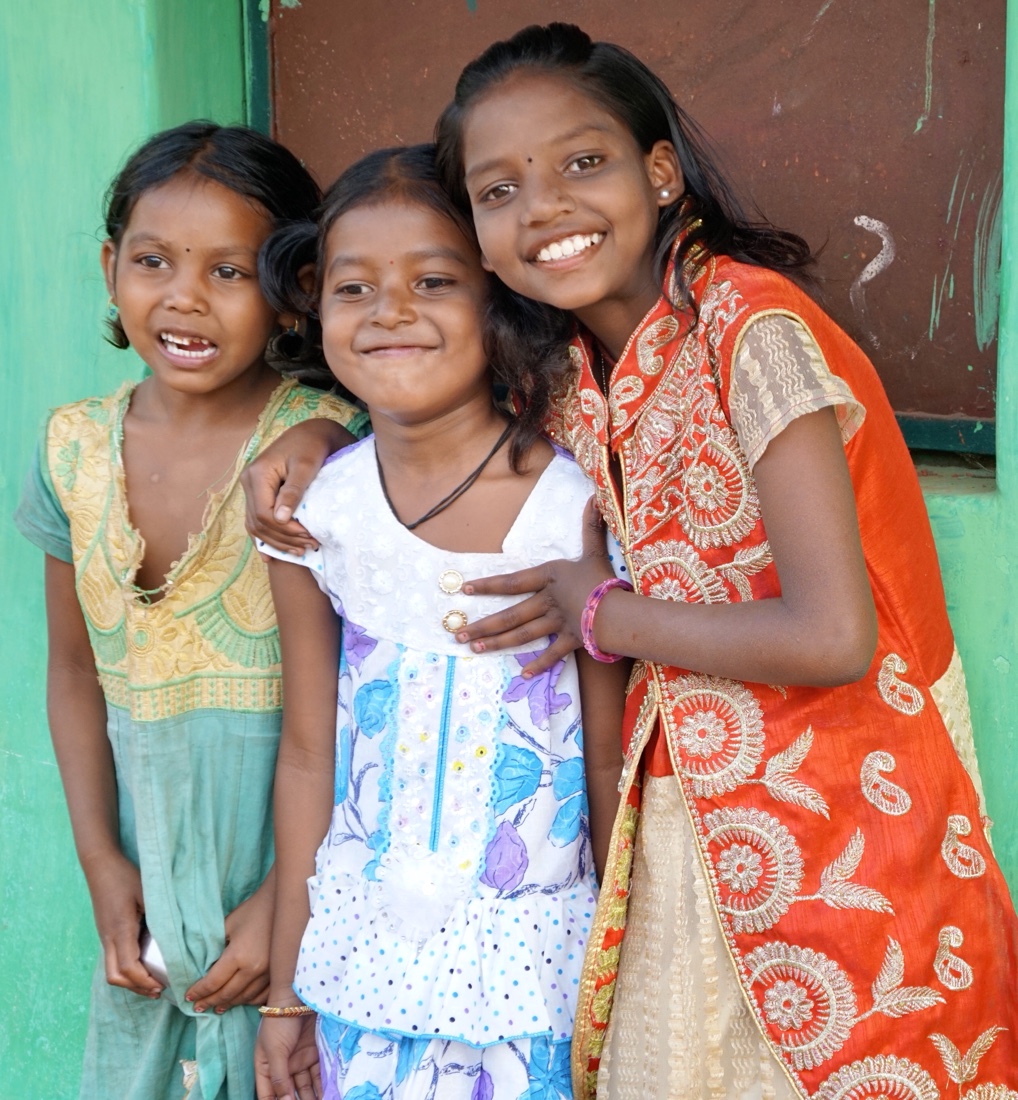 Head back to the hotel for a light lunch on the patio outside my room at 1PM. Relax and blog until 3:30, when Prasant comes by, and we walk to a nearby pottery village. It’s very cool that our hotel is essentially part of the village.
Head back to the hotel for a light lunch on the patio outside my room at 1PM. Relax and blog until 3:30, when Prasant comes by, and we walk to a nearby pottery village. It’s very cool that our hotel is essentially part of the village.
We see the place where members of the community make pottery and Padang explains the process. The government has provided pottery wheels, at which people work in the large, covered shed. The air is full of smoke, and must be a huge health hazard.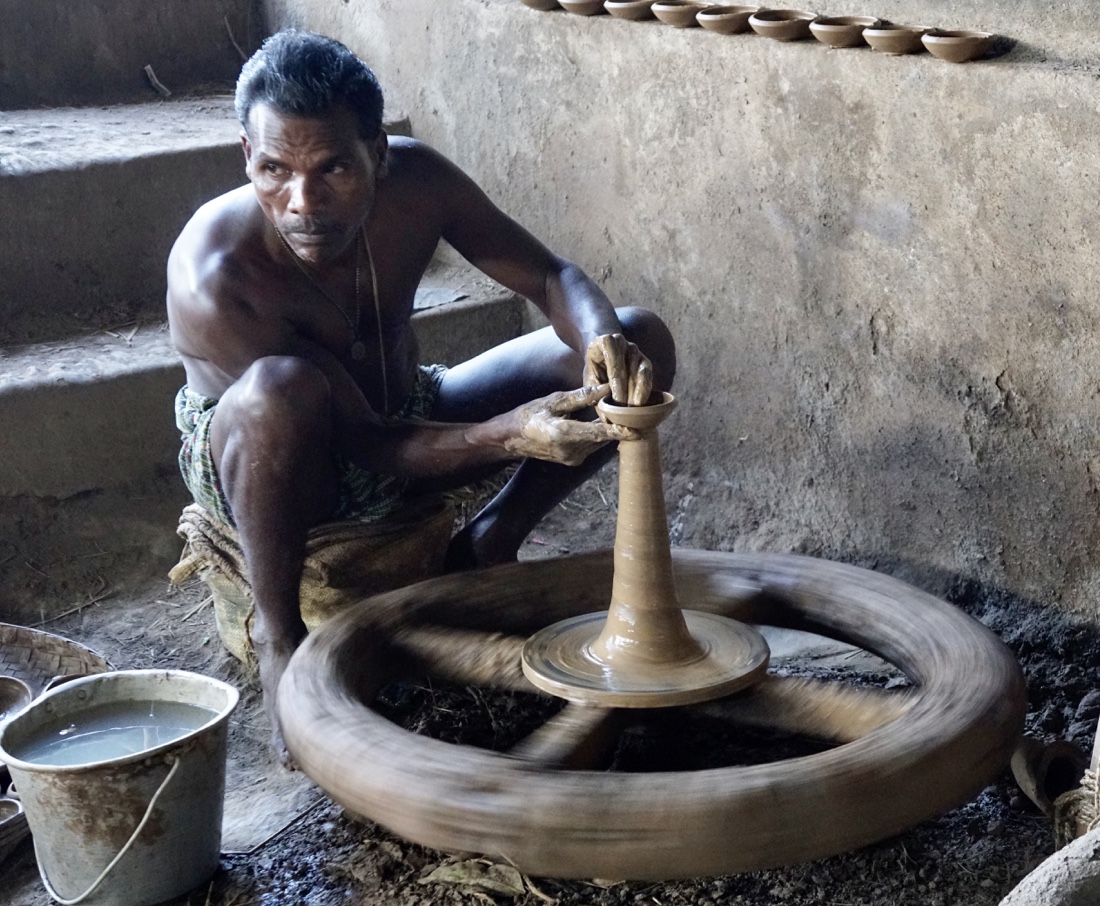
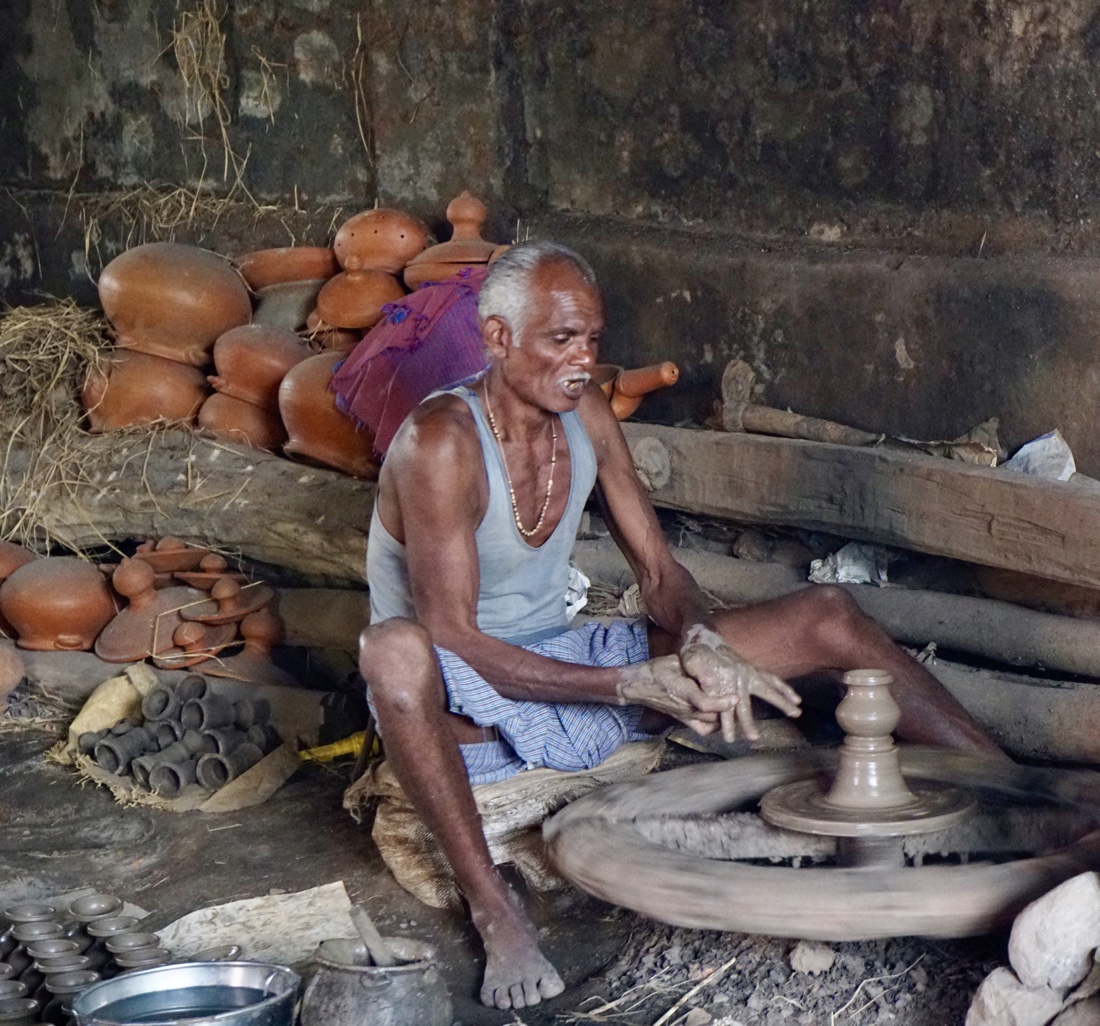
We stay in the village until the cows come home from their day in the jungle, then I walk the short distance back to the hotel and rest, blog and shower before dinner with the French group. My would-be roommates from Spain join us, but since we’re at different tables I have only a brief opportunity to exchange a few words with them, utilizing my high school Spanish, as revived by a number of trips to Spanish-speaking countries.
then I walk the short distance back to the hotel and rest, blog and shower before dinner with the French group. My would-be roommates from Spain join us, but since we’re at different tables I have only a brief opportunity to exchange a few words with them, utilizing my high school Spanish, as revived by a number of trips to Spanish-speaking countries.

Terrific portraits Arnie!
Amazing photos Arnie.
They just get better and better every trip you take!
Hope it isn’t too hot for you.
Beautiful photos! I especially love all of the ones you took at the villages. It must be so cool to have your hotel be right there, a part of a village. It sounds like a blast!
Love,
Phoebe
Amazing!!
FABULOUS